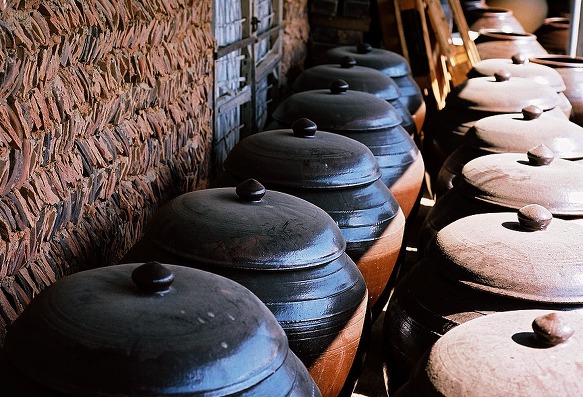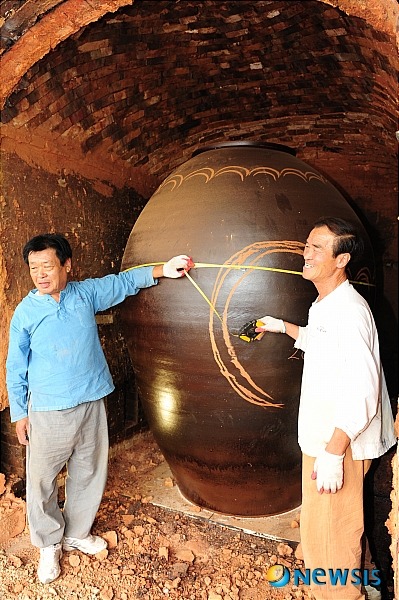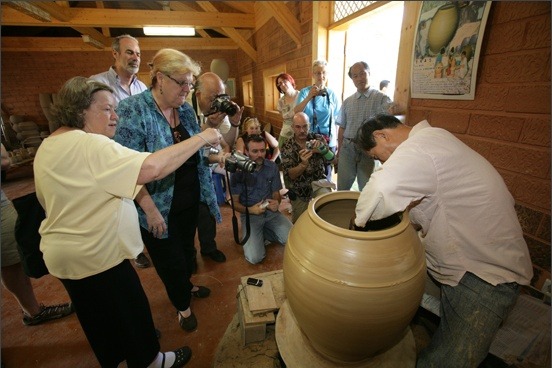Would you like a bowl of Ttukbaegi?
Onggi, a traditional Korean pottery has a significant role as a container preserving food in Korean food culture. In fact, among this time is when we remind of the rows of kimchi and doenjang (soybean paste) jars that used to be stored in the house yard. Nowadays as plastic and stainless containers became popular and the housing environment has changed Onggi lost its popularity in daily life of Koreans. However, recently the cultural value and identity of Onggi has been acknowledged. Books written in English to promote a global use of Onggi have been published followed by attempts of contemporary interpretation on the traditional pot. Let’s take a closer look.

Onggi, in Korean means earthenware or pottery with a dark brown glaze, which is a native Korean pottery of daily life. Often used as a kimchi jar, for its cheap price and long-durability has been generally used by Koreans. Onggi Folk Museum in Ssangmun dong, Seoul, possesses a variety of Onggi; the big ones mostly used for preserving soy sauce, doenjang, kimchi and water and others used in a more wide range of use e.g. chimneys, candle bottles, lamp-oil containers, Gi-wa(roof tile) and tea pots.

<The biggest Onggi made in Oe-gosan Onggi Village, height 229cm, girth 520cm>
Especially, Onggi is a ‘pot from nature,’ that when cracked or broken to be thrown away it is simply back to earth as soil. The pot is made of soil, water, fire and wind that are harmless to our body. It is eco-friendly but also has traditional Korean scientific logics embedded, no surprise it was selected as one of ‘100 Cultural Symbols of Korea.’ Last year ‘Onggi Expo Ulsan Korea, 2010’ was hosted by Ulsan Oe-gosan Onggi village, the biggest Onggi trading center of Korea.

CHA publishes an English edition book on Onggi
The National Research Institute of Cultural Heritage (NRICH), Cultural Heritage Administration of Korea published a book entitled as ‘Onggi’ written in English to introduce the Onggi culture to the world. In order to help the orientation of foreigners lots of visual images are included for explaining the production process of Onggi. The process is introduced by three themes – earth, fire and spirit, which are the essential elements for making the pot throughout the history. Among the three, spirit is the most critical that contains the heart of the artisan who made the pot.

Due to the change of housing environments and industrial progress, there are less people who use Onggi in daily life, especially with the invention of kimchi refrigerator in Korea. A significant effort to establish the identity of Onggi culture inheriting its excellence as a traditional container for fermented food, and its historic and cultural value as deriving from the early pottery of human history, should be continued. To develop Onggi suitable for practical use in contemporary life or application to interior design can be one idea. Through a long-term and specific plan, a spread of traditional Onggi culture of Korea across the world is hopefully to be expected.
No comments:
Post a Comment